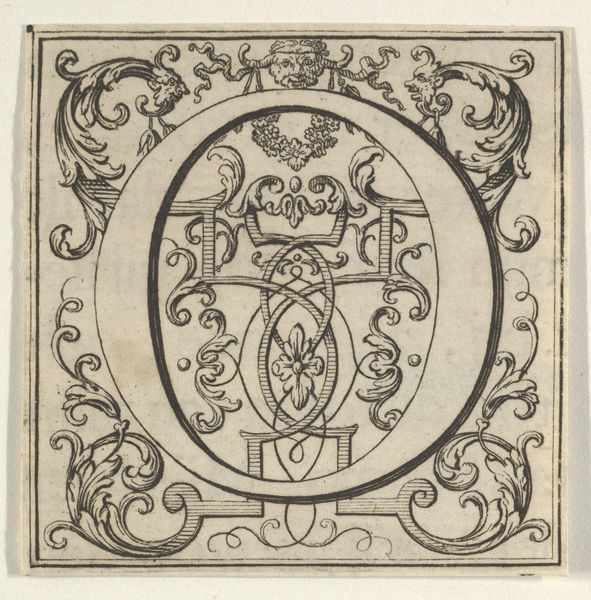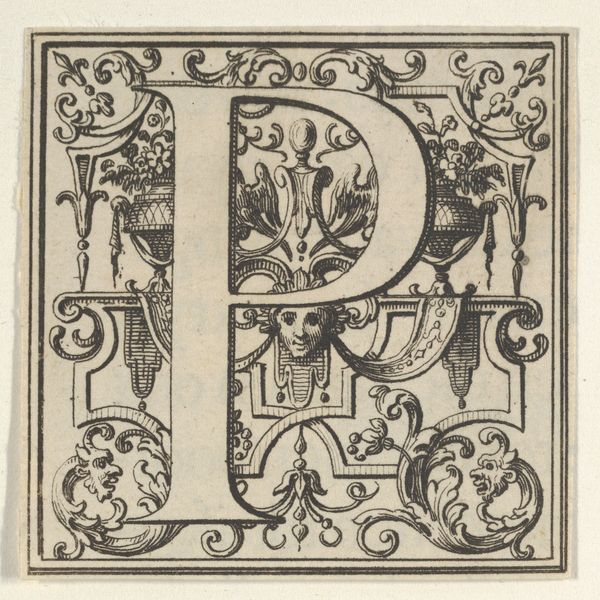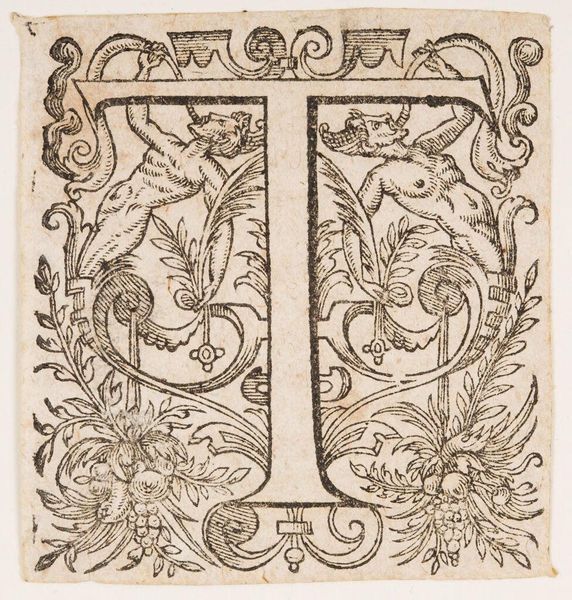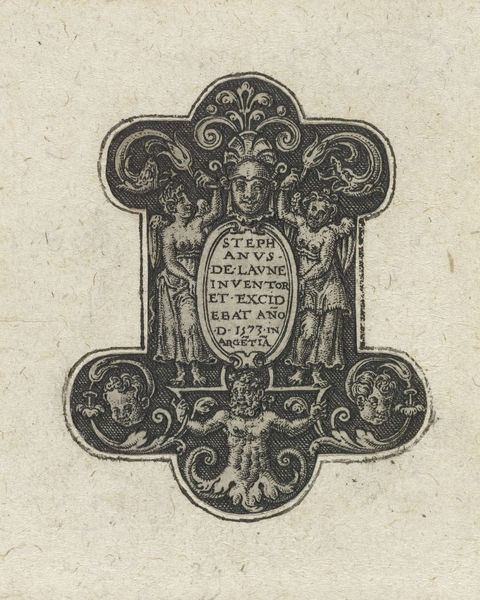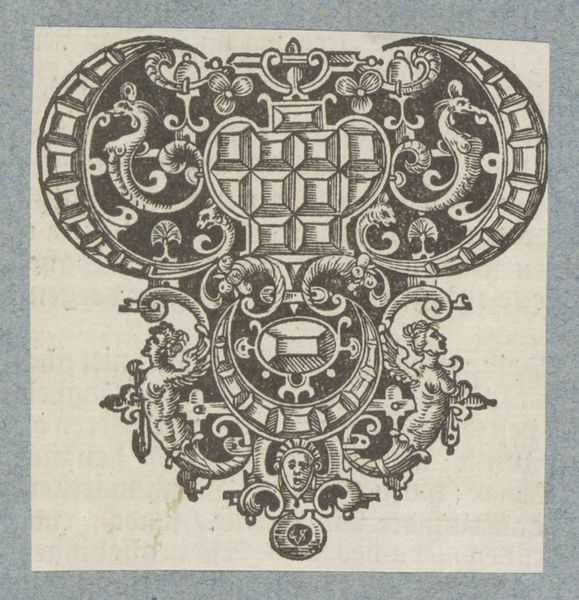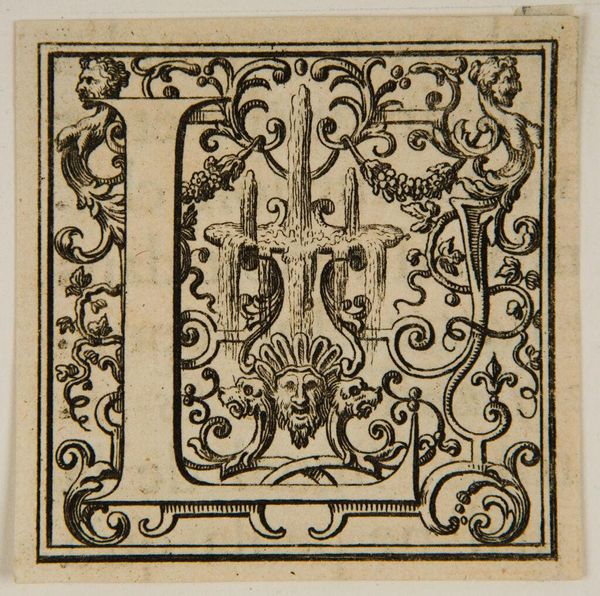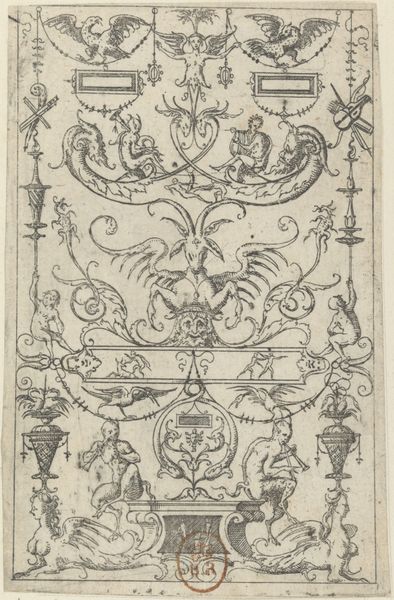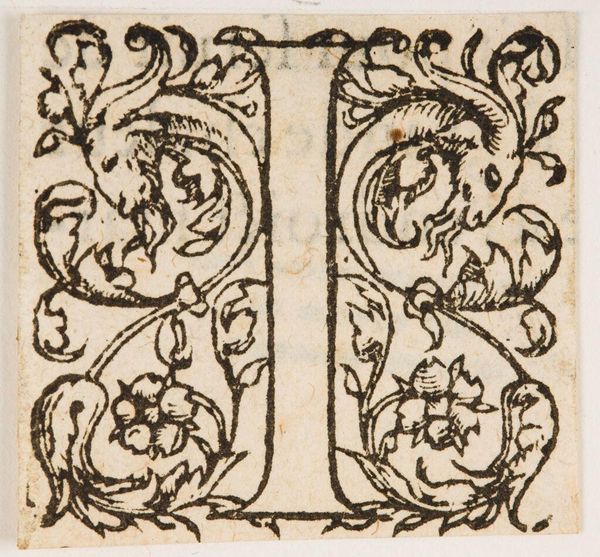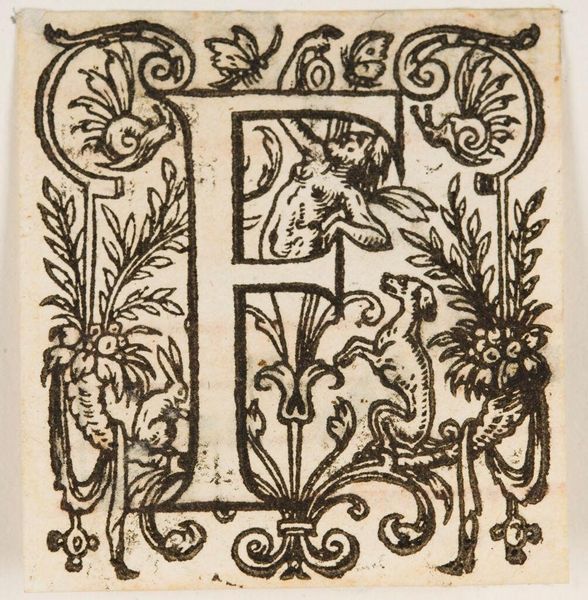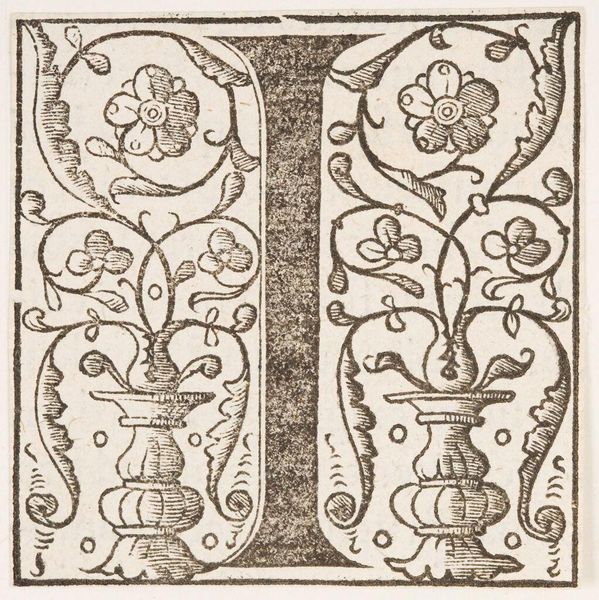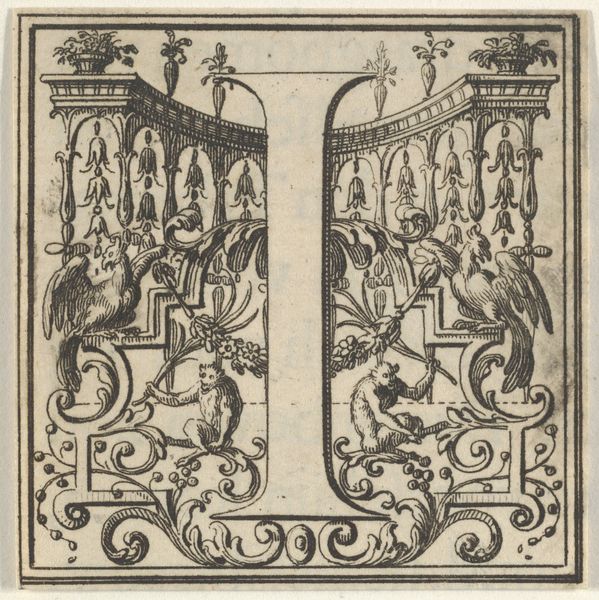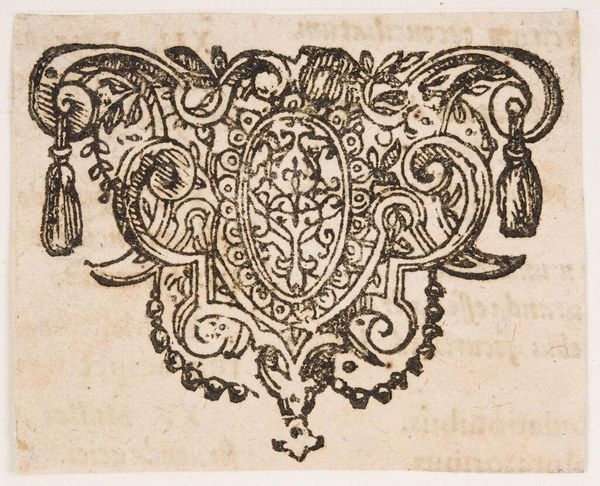
Roman Alphabet letter T with Louis XIV decoration 1700 - 1733
0:00
0:00
drawing, graphic-art, print, pen, engraving
#
drawing
#
graphic-art
#
baroque
#
pen drawing
# print
#
pen illustration
#
form
#
line
#
pen
#
engraving
Dimensions: Sheet: 2 3/16 × 2 1/8 in. (5.5 × 5.4 cm)
Copyright: Public Domain
Curator: Immediately, I'm struck by the fine detail—it’s intricate! Editor: Yes, this print from the Metropolitan Museum of Art collection, titled "Roman Alphabet letter T with Louis XIV decoration," likely made between 1700 and 1733, uses line and form quite cleverly. It's an engraving attributed to Bernard Picart. The bold lines, the careful arrangement of the flora and fauna...there’s a visual hierarchy at play here. Curator: A hierarchy undoubtedly reinforced by its material properties. Engraving allowed for relatively widespread reproduction, making the imagery associated with Louis XIV more accessible for decorative purposes. Think of the engraver as part of a system that supported and broadcasted royal image-making. Editor: Exactly. We see Louis XIV represented by implication, rather than direct portraiture—through symbolic imagery that evokes his reign. The use of the alphabet itself implies knowledge, power, and the capacity to disseminate information, all carefully controlled under his rule. Notice, for instance, how even a letter like 'T' becomes a propaganda tool, subtly reinforcing authority and culture in this era. Curator: Considering Picart’s craftsmanship, his choice of pen and ink, it would be productive to question what he was thinking. Were there social limitations given what Louis XIV represented to his workshop? Editor: Precisely. We are confronted with a tension inherent in baroque art, which attempts to reconcile the lavishness of power with more subtle expressions of cultural identity. Looking closely, those dragons in the lower portion seem restrained—almost captive within the 'T', if that makes sense? Curator: Yes, the creatures do lend an element of both beauty and containment to the letterform. As you say, understanding how Picart and his workshop approached their labor also gives us a better view on art’s role within the economics and power structures of 18th-century society. Editor: When examining a historical print such as this, the material details are important to interpreting the imagery and overall intention. Thank you for this insightful conversation on a piece with historical and contemporary relevance! Curator: My pleasure! These processes reflect, and ultimately affect, society's infrastructure surrounding art’s consumption. I leave hoping listeners engage art conscious of the many processes involved.
Comments
No comments
Be the first to comment and join the conversation on the ultimate creative platform.
